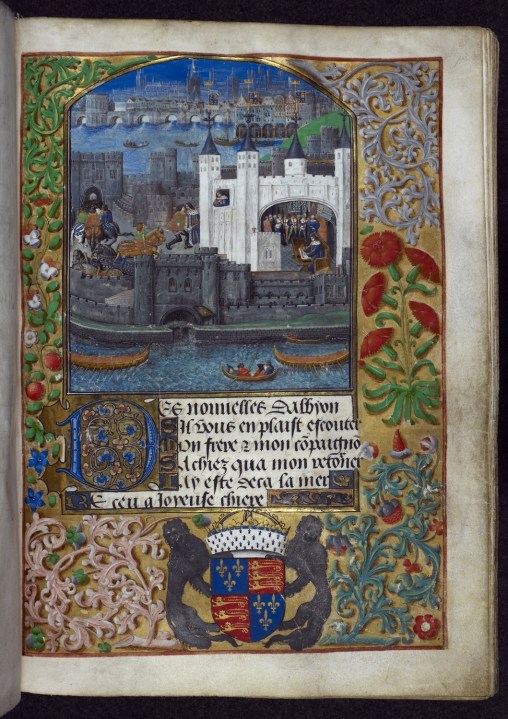Edward IV was a conflicted man. He was a prodigious boozer and wencher, and a voracious reader and thinker. The bon vivant founded the English Royal Library: an assortment of illuminated books from England and continental Europe, some of which were bound before the Norman Conquest. It was a treasury of 100s of years of English and European history. The library grew throughout the Tudor and Stuart periods, before George II bequeathed it to the nation in 1757. The collection is now held in the British Library in London, where Royal Illuminated Manuscripts: from King Athelstan to Henry VIII opened this morning.
It is a captivating visual show that provides glimpses of medieval kings at work and at play. There are instructive books to aid the king in the public sphere, such as the guide to kingship presented to the child king Edward III. The text and the illustrations are very much of their time, particularly in their patronising attitude to women at court. But it also offers timeless wisdom: warning fallible monarchs against hubris.
The private ruler also emerges. A multitude of personal psalters and gospels are displayed, as well as court entertainments. The delicately produced religious books will be well known to visitors, but this show presents them as treasured personal possessions, carried into bed chambers to be read among intimates. There is a suggestion that these volumes were commissioned directly, which implies a close relationship between artist and patron.
That hazy suggestion becomes more apparent when you see the extravagant illustrations in volumes of courtly literature. The oral traditions of Arthurian tales and chivalric romances were all committed to paper and decorated to taste; they would then be performed for the king’s amusement. Edward IV, for instance, commissioned an edition of French Prince Charles d’Orleans’ poems, which the latter had written when in captivity in London at the height of the Hundred Years War. Around the margins of the verse, the artist depicted Charles imprisoned in the Tower of Edward’s magnificent London: a sign of the king’s pride in his thriving capital and of his private ambitions to rule France.

That arresting image does not stand out from the other exhibits, most of which are alluringly luminous. The curators have used several digital tablets that allow you to examine more of the book than is physically displayed. This interaction enables the viewer to overcome the obstacles of presenting such delicate manuscripts; they must be dimly lit and encased in very thick Perspex boxes for preservation. The best example of a work enlivened by technology is Mathew Paris’ 13th century map of the pilgrimage route from London to Jerusalem. The computer follows the proposed journey to the Holy Land, and the viewer can see every minute cartographic and philosophical detail Paris included. It is a virtual expression of the fact that the medieval world was not dark and parochial. Ideas, fashions and people migrated freely around the continent. England was neither exceptional nor isolated from that cultural exchange. Far from being a barrier, the Channel was a conduit — which explains the prominence of Dover in Paris’ map.
It’s a pity that the exhibition says so little about those facts. The artists and artisans, for instance, are divorced from their creations. Their names may have been lost in time; but the void is evident, especially as so many exhibits seem to be the result of a close acquaintance with a royal patron. Those estimable men, who were vital to sustaining the mystique of monarchy, have been marginalised from the story. History is often studied from the ‘bottom-up’ these days, emphasising the lives of those who were ruled. This wonderful exhibition is a strangely old fashioned retelling of our island story.







Comments